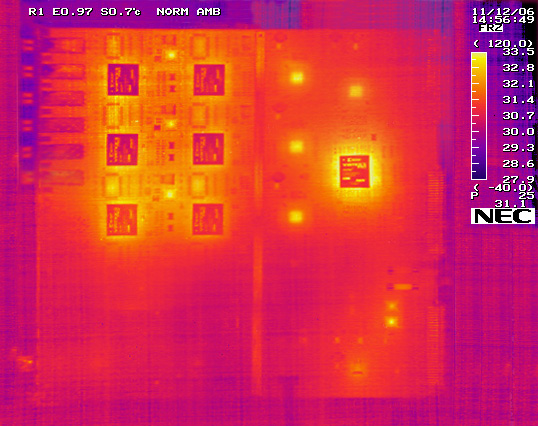
Note that the thermal camera records radiated heat.
The FPGAs packages are made out of metal which reflects heat rather
than radiate heat. This is why the FPGAs look "cool" as if you are looking into a mirror
that reflects the radiated heat in the laboratory. The black text on
the FPGA packages ("Xilinx Virtex-II Pro") radiates heat and thus this
text looks "hot". The heat of the FPGAs is transported into the Printed
Circuit Board via the solder balls of the Ball Grid Array.
The black plastic SHARC DSP packages radiate the heat directly.
Normal picture of the
MROD-X Component Side


